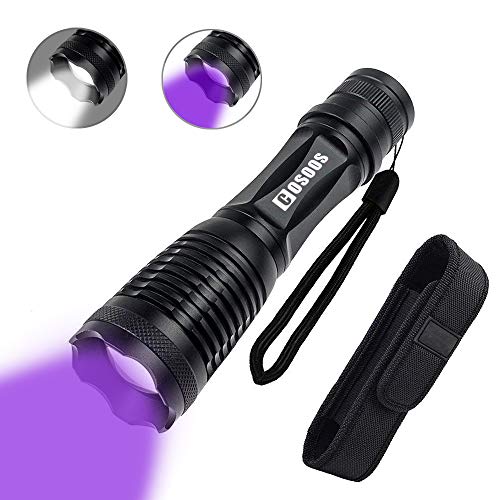

Just shine it on a UV-reactive stone in your collection or white paper (which should glow blue) to ensure that it’s in working order. I do recommend testing a light before you go out. With that accomplished, you can focus on finding interesting minerals instead of wondering if your light is working. Rockhounding with your UV light is pretty straightforward, provided that you have the right light. Tips for Rockhounding With Your UV Light at Night Know what you’re hunting for and you’ll be ahead of the curve. I can quickly sort through a ton of rocks to find those with calcite and either keep or remove them depending on my goals for the trip. In one area I hunt, for instance, the only UV-reactive mineral of note is calcite. My recommendation is to take a look and see what minerals are in the area you’re hunting in, then find out if any of them are known to fluoresce. The following list is incomplete, but covers some of the more common finds you’ll see: There are a huge variety of different minerals that display some level of fluorescence. What Kind of Minerals Can a UV Light Detect? They’re useful, but for hunting at night I feel it’s often better to have a bit of visible light to see with. This blocks the majority of visible light that emerges from the diode and allows for minerals to fluoresce in different colors, instead of the blue-purple most fluorescent minerals return.

Anything 200nm or under is dangerous, but they’re generally not available to the public, especially in a transportable form.įor collectors with displays, or people looking for very specific minerals, it’s worth it to seek out a blacklight filter as well. This is technically in the longwave portion of the UV spectrum, with shortwave UV being lower at around 250nm or less. The type of ultraviolet light depends on the wavelength of the light that’s being produced.Īs a general rule, you want something in the 365nm range for rockhounding. UV comes in both shortwave and longwave forms, and they have different applications. 10 Rocks and Minerals That Glow Under Black Light.The overall effect means the UV energy has been lowered to produce light in the visible spectrum.īut, all we really need to know as rockhounds is that ultraviolet light makes certain rocks glow. The compounds which absorb the UV light, known as phosphors, then drop the electrons back to their initial state.

The basics are simple, however: ultraviolet light is mainly invisible to the naked eye, but it excites the electrons in a mineral (or other material) that displays fluorescence. It’s a little bit more complicated than that.

Specifically, one that’s visible to the human naked eye. The key here is that many stones are fluorescent, meaning they absorb the ultraviolet light from the lamp or light and release it in a different part of the spectrum. This means you can rockhound with a UV light at night in order to find interesting stones or to find specific stones you know are in the area. At night, this becomes much more difficult even when you have a good flashlight on hand.īut many kinds of stones actually glow underneath the light of a UV lamp. Why a UV Light?Īs rockhounds, we tend to visually identify our finds as we’re walking along. So, let’s break out our e-tools and get ready to search some gravel, and I’ll teach you a bit about rockhounding at night with ultraviolet light. It’s just a matter of gathering together the right knowledge. These lights can cause certain minerals to fluoresce, making them easy to identify at night, and also help you with identification at home. One of the most valuable tools a prospective rockhound can have on hand is a UV light in the right spectrums.


 0 kommentar(er)
0 kommentar(er)
